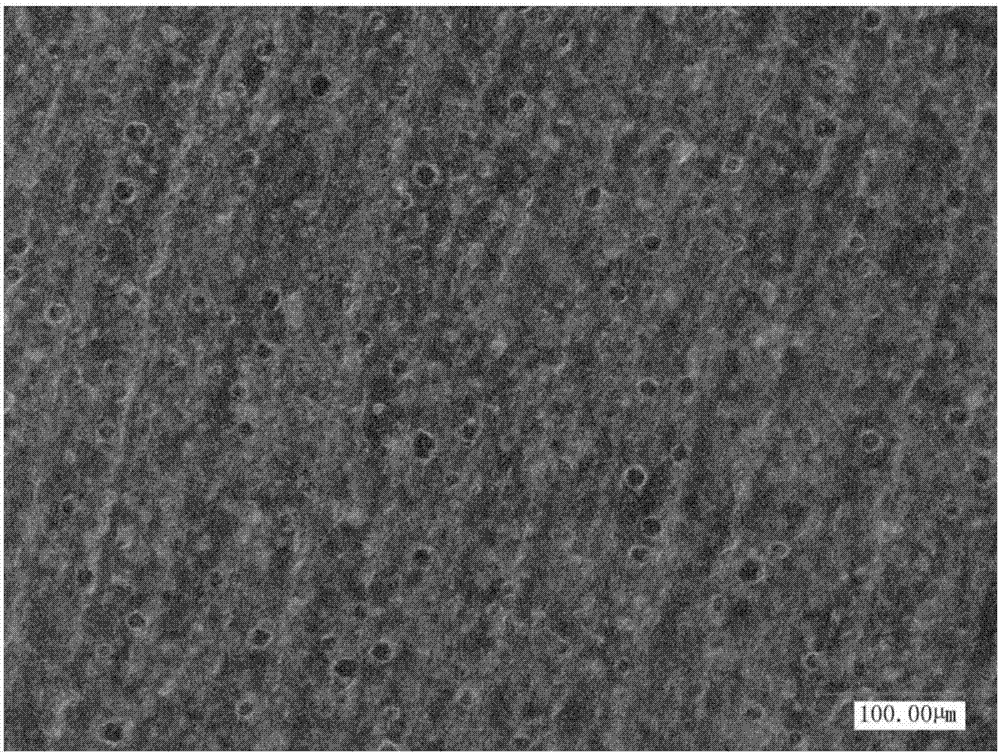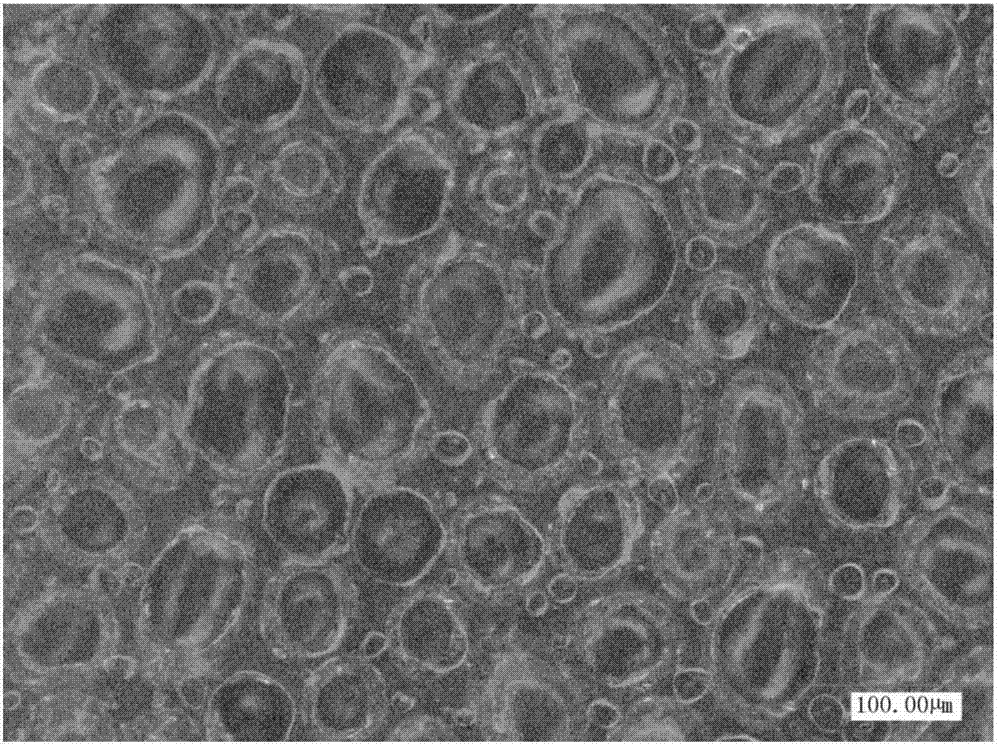Porous silicon rubber thin film containing graphene as well as preparation method and application thereof
A rubber film and graphene technology, applied in medical science, bandages, prostheses, etc., to achieve the effects of good product safety, avoid bacterial infection, and promote wound healing
- Summary
- Abstract
- Description
- Claims
- Application Information
AI Technical Summary
Problems solved by technology
Method used
Image
Examples
Embodiment 1
[0040] Add 4g of medical liquid high-temperature curing silicone rubber K-1008A / B resin (A:B=1:1), 3.2g of liquid paraffin and 0.04g of multilayer graphene into 8.8g of tetrahydrofuran, stir and dissolve at room temperature to obtain a uniform composition Membrane liquid, stand still or vacuum degassing for 5min. Use a film applicator to coat a film on a polytetrafluoroethylene plate, and place it naturally at 25°C for 60 minutes, and the solvent will volatilize and cause phase separation. Next, place the embryo film at 100°C to cure for 20 minutes. After the silicone rubber is cured, remove the silicone rubber film from the polytetrafluoroethylene plate, soak it in n-hexane at 65°C for 4 days, and replace the solution once a day. After 4 days, take out the silicone rubber film from n-hexane, soak in ethanol to remove n-hexane, take out the film from ethanol and place it at room temperature, and obtain a graphene-containing porous silicone rubber film after the ethanol is comp...
Embodiment 2
[0042] Add 4g of medical liquid high-temperature curing silicone rubber K-1008A / B resin (A:B=1:1), 3.2g of liquid paraffin and 0.04g of single-layer graphene into 8.8g of tetrahydrofuran, stir and dissolve at room temperature to obtain a uniform composition Membrane liquid, stand still or vacuum degassing for 5min. Use a film applicator to coat a film on a polytetrafluoroethylene plate, and place it naturally at 25°C for 60 minutes, and the solvent will volatilize and cause phase separation. Next, place the embryo film at 100°C to cure for 20 minutes. After the silicone rubber is cured, remove the silicone rubber film from the polytetrafluoroethylene plate, soak it in n-hexane at 65°C for 4 days, and replace the solution once a day. After 4 days, take out the silicone rubber film from n-hexane, soak in ethanol to remove n-hexane, take out the film from ethanol and place it at room temperature, and obtain a graphene-containing porous silicone rubber film after the ethanol is co...
Embodiment 3
[0044]Add 4g of medical liquid high-temperature curing silicone rubber K-1008A / B resin (A:B=1:1), 3.2g of liquid paraffin and 0.04g of graphene oxide into 8.8g of tetrahydrofuran, stir and dissolve at room temperature to obtain a uniform film solution, stand still or vacuum defoam for 5min. Use a film applicator to coat a film on a polytetrafluoroethylene plate, and place it naturally at 25°C for 60 minutes, and the solvent will volatilize and cause phase separation. Next, place the embryo film at 100°C to cure for 20 minutes. After the silicone rubber is cured, remove the silicone rubber film from the polytetrafluoroethylene plate, soak it in n-hexane at 65°C for 4 days, and replace the solution once a day. After 4 days, take out the silicone rubber film from n-hexane, soak in ethanol to remove n-hexane, take out the film from ethanol and place it at room temperature, and obtain a graphene-containing porous silicone rubber film after the ethanol is completely volatilized, wit...
PUM
| Property | Measurement | Unit |
|---|---|---|
| Film thickness | aaaaa | aaaaa |
Abstract
Description
Claims
Application Information
 Login to View More
Login to View More - Generate Ideas
- Intellectual Property
- Life Sciences
- Materials
- Tech Scout
- Unparalleled Data Quality
- Higher Quality Content
- 60% Fewer Hallucinations
Browse by: Latest US Patents, China's latest patents, Technical Efficacy Thesaurus, Application Domain, Technology Topic, Popular Technical Reports.
© 2025 PatSnap. All rights reserved.Legal|Privacy policy|Modern Slavery Act Transparency Statement|Sitemap|About US| Contact US: help@patsnap.com



